Last Updated on May 2, 2025 by Michelle
I don’t buy meat at the grocery store these days. When we brought home our first piglets I had no idea that I would soon be able to say this… or even want to say this.
But it turns out pasture-raised pork is some of the most delicious, versatile meat I have ever prepared. I’m adding new pork recipes right here all the time…. take a look.
Combine the versatility of pork with a few things I’ve recently learned about grocery store meat and, well, I’m elated to say I seldom buy any meat at a grocery store. Read on for all the reasons why…
Or listen in to this topic over on my podcast: the Simple Doesn’t Mean Easy Podcast, S3, E8
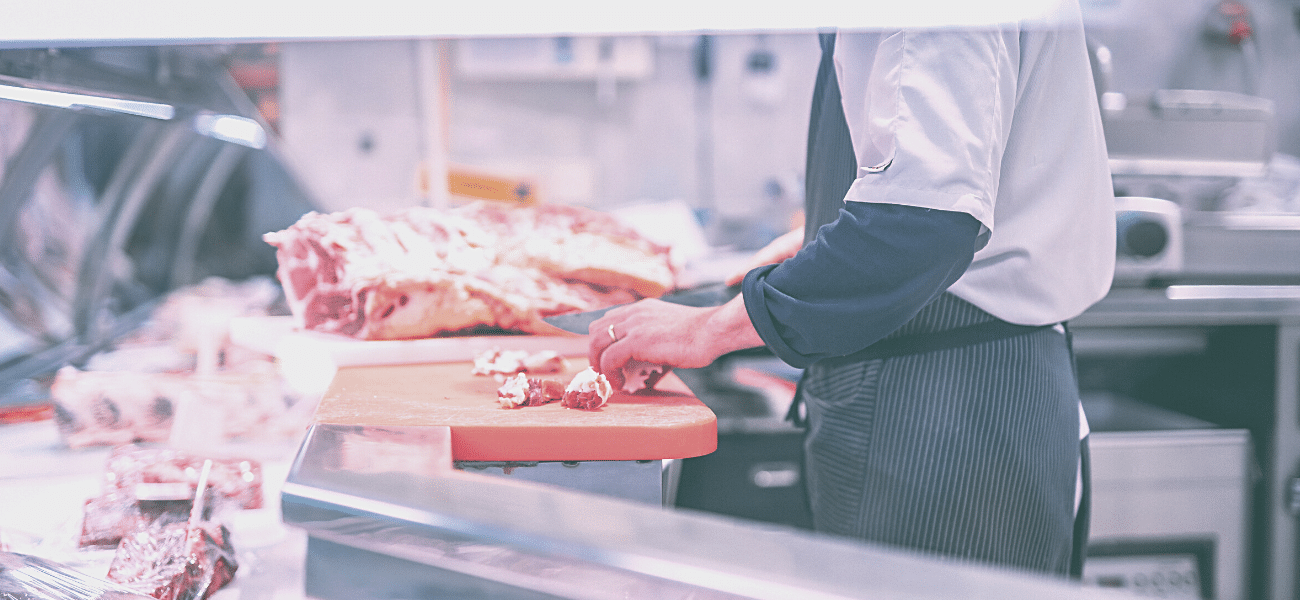
5 Reasons I Don’t Buy Meat at the Grocery Store
Every week, more than two million pigs are slaughtered for American dinner tables. That’s more than 104 million per year, guys! Needless to say, to meet this demand, a very industrial system has evolved that is nothing like a genuinely good food system should be.
Of course plenty of other animals are being raised commercially for meat as well, but since I’m a pig farmer and since I want this article to not grow too large in its scope, we’ll stick to pork, but know that many of these issues impact all of the meat you buy at your local grocery store.
Also, before we go any further, I’m guessing before you reach the end of this article you’re going to be wondering, “Well, where do I get my meat then!?”
Ahhhh, that’s something I LOVE taking about! I found this amazing platform that’s connecting concerned consumers like us to the BEST regenerative farmers in the nation and somehow they’re even doing it at the BEST prices I’ve found anywhere for high-quality meat that is raised right.
Check out 99 Counties, and be sure to use code SOULYRESTED for $30 off your first box and free shipping always on all orders over $150. Bonus: for a limited time you even get a FREE FILET every month for a year!

Local, Pasture-Raised Meat is What it Claims to be
The first big shocker when you examine the conventionally raised meat industry is the fact that you can’t trust the labels. Even if it’s labeled “product of USA” it’s probably imported.
If you’re more of a “give it to me quick” kinda person, I saved the gist of this whole article in a quick highlight on instagram right here.
The reality? Your meat probably came here in a container ship filled with frozen carcasses killed on the other side of the planet. But as long as it was altered or sliced in some way in the U.S., it can be labeled “product of the USA.” (source)
Insane, right?
If, on the other hand, you can raise your own meat or find a local pig farmer who keeps his pigs on pasture, you know exactly where you meat comes from.
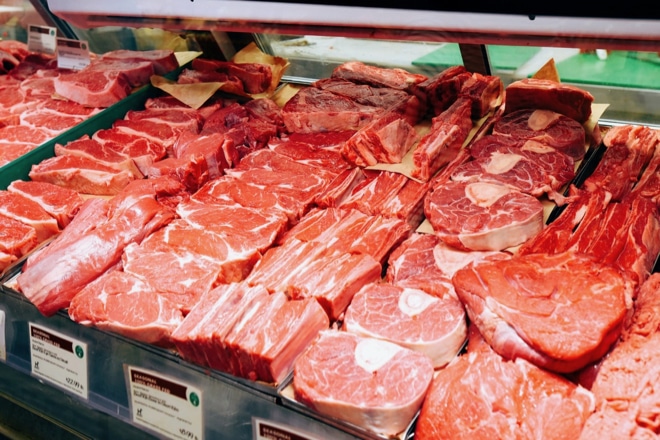
Local, Pasture-Raised Meat Has Zero Sodium Phosphate
As I explain in my book, Sweet Maple,
Back in 1988, when Oprah lost a ton of weight, she decided to make a memorable impression on her audience. She, consequently, changed our society’s view of fat forever when she pulled a red Radio Flyer wagon onto the stage filled with nasty, greasy animal fat to represent how much weight she had lost. Seeing fat as the gross enemy in the 1980s and 1990s is, many experts believe, the root cause of America’s obesity…
Then in 1992, the new food pyramid made the push for a low-fat diet official. It was obvious in the new pyramid that carbs were good and fat was bad. Indeed, that pyramid became the most widely adopted food guideline in the history of our nation. One survey reported that most Americans—more than 8 out of 10—believed the food pyramid was the basis of a perfect eating plan. The problem is that all of us who were the byproduct of that movement, myself included, wound up cutting out all fats, loving all carbs, and, ironically, facing obesity. Because not all fats are equal, some are even good! (Sweet Maple, page 167-8)
Whether we can blame Oprah or not, consumers demand lean meat. So we started breeding pigs for the leanest pork possible.
But of course making the animals leaner and shaving fat off the meat has reduced the flavor and tenderness. It’s a vicious cycle y’all.
So, a few decades ago, we started enhancing pork. (They sometimes call it “seasoned,” which sounds so much nicer doesn’t it?) They inject muscle groups with water, salt, and sodium phosphate during processing.
Bonus, it even increases shelf life. She says sarcastically. Of course, usually “increased shelf life” is never the nutritional option, and sodium phosphate is no exception…
- Sodium phosphate can disrupt how your body absorbs iron, calcium, and magnesium.
- Eating too many nitrates has been linked to a variety of cancers, including colorectal and stomach cancers.
- Sodium phosphate causes vascular damage, e.g. endothelial dysfunction and vascular calcification. (source)
But again, like my first reason for not wanting to buy grocery store meat, this isn’t obvious. In fact, stores don’t even have to let us know that sodium phosphate is included in our meat choice. They only have to label the meat with the words “water added” or “salt added.” Hmmmm….
Crazy enough, not only are you most likely eating unidentified sodium phosphate, you’re also paying more for the luxury.
10% more to be exact.
You see, the injection adds roughly 10 percent to the overall weight of your meat. And you don’t really have a choice… it’s almost impossible to find a grocery store in the US that sells any pork that is NOT enhanced. According to the author of The Gourmet Butcher’s Guide to Meat, “It is becoming quite difficult to find non-enhanced pork.”
Local, Pasture-Raised Meat Has Zero Ractopamine
As if the facts that my meat may be imported from overseas yet labeled “product of the USA” and injected with things that could cause heart failure and cancer isn’t enough, enter ractopamine, stage right…
While no pigs are fed or injected with hormones, many are fed products, in the last weeks of their life, that contain a food-additive drug known as ractopamine.
Ractopamine stimulates muscle growth and reduces fat, or essentially encourages the animal to grow larger and leaner, similar to the results of a human using a steroid.
Ractopamine is a beta agonist, but performs like steroids because it increases metabolism, which allows the conversion of food into muscle faster.
So it all comes back to Oprah and a hatred of fat in our meat.
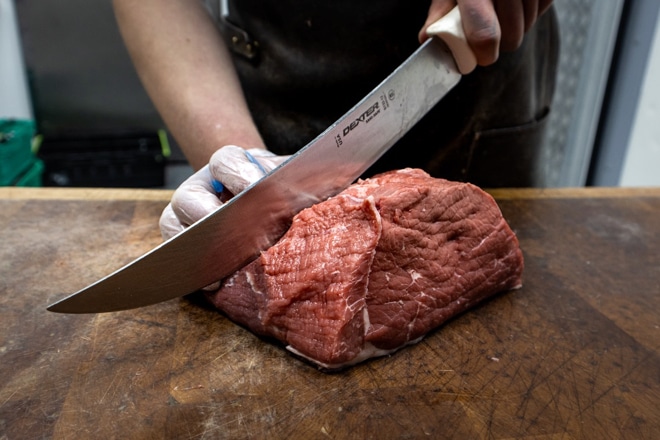
Anything I’ve ever read about food or product additives that mimic hormones has been bad, to say the least, yet the USDA says it’s “safe.” The fact that ractopamine has been banned in more than 160 countries makes me wonder if I want to blindly trust the USDA on this one. (source)
If you do some research on how ractopamine impacts people, it’s not a pretty picture. Ractopamine speeds up our heart rate and leads to anxiety. Huh. Just what folks need these days. And similar drugs have been directly linked to cardiovascular health concerns.
I’ve read many folks arguing that there are no longer traces of the drug in the meat by the time it is eaten, but Consumer Reports investigated 240 U.S. pork products and found ractopamine residue in a large portion of the meat. (source)
Crazy enough, ractopamine also negatively affects the meat’s taste. Ummm, wasn’t this all a vicious cycle on a quest to improve the meat?
Local, Pasture-Raised Meat is Not “Conventionally Raised”
From The Gourmet Butcher’s Guide to Meat, by Cole Ward (which I highly recommend):
Denise Beaulieu, research scientist at the Prairie Swine Center in Saskatoon, Canada, described modern stall-based housing, which is the general commercial method of raising conventional pork… Sows are impregnated and placed into gestation stalls. Each is just big enough for the sow to stand up adn lie down–about 6 1/2 feet long and 2 feet wide. Floors are usually smooth concrete adn have narrow slots to allow waste to drop through. Sows are placed into the stalls when they’re bred, and since the average gestation time is 114 days, and sows are pregnant most of their lives… well, you get the picture.
Studies have shown that the mere last few hours of a pig’s life impacts the taste of the meat. Surely a life of stress and confinement can’t possible produce the best quality meat. Then on top of that, it’s just not right guys. Animals deserve our care and respect if we want to enjoy them and their meat to its best potential.
I’m very thankful that our family has the privilege to give a good life to a new batch of pigs every spring and summer and offer them a quick, stressless, humane death right here on our farm where they have roamed pastures for their entire life. Read more here about the process of processing pigs on the farm.
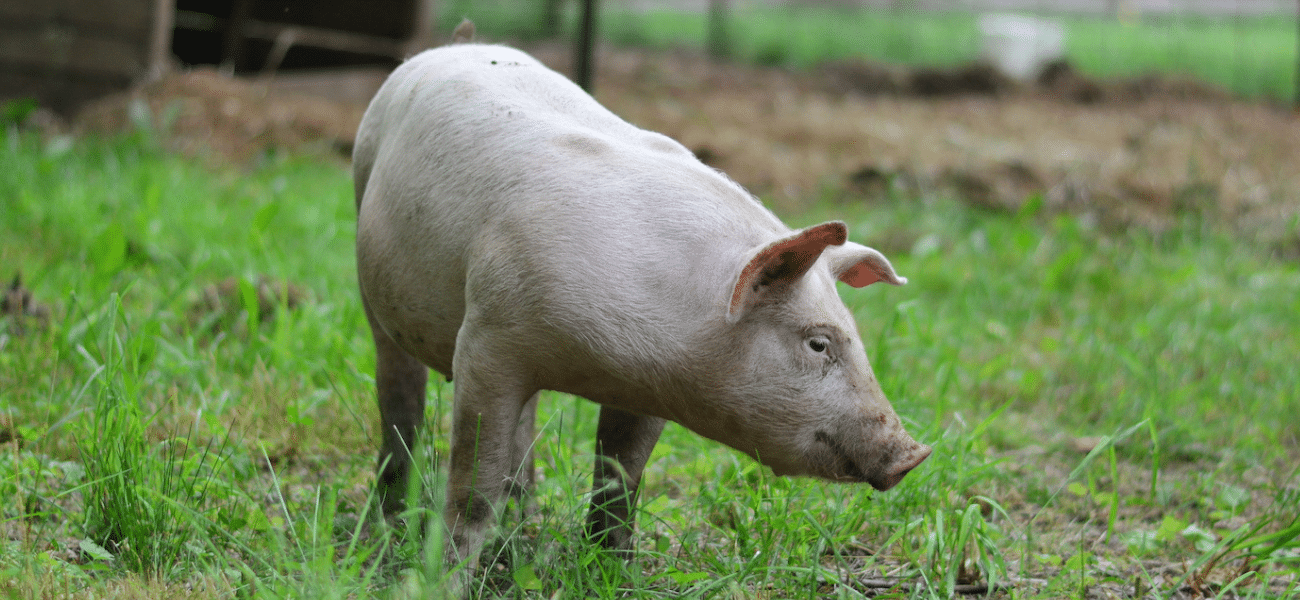
Local, Pasture-Raised Meat is Delicious
There’s a great little book, The Complete Book Of Butchering, Smoking, Curing, And Sausage Making. The author, a professional butcher himself, explains how the animal’s stress level at time of death (in addition to its temperature and overall health) can have a huge impact on the meat… on its texture, pH, moisture, and color.
It’s true, guys, all this commercialization of meat has led to bad ideas to try to improve the overall quality of the meat when, in the end, the best meat is found in the pure simple art of the old days… bringing a few piglets into your pasture, giving them a good life, and offering them a humane and simple death.
In return, they will provide your family with truly the most delicious meat you have ever tasted.
It’s simple, we have just made it complicated.
Talk to me!
If you have any questions, leave a comment below. And please tag me on ig if you share local-raised meat you’re enjoying @souly.rested.
Listen in to my podcast episode that discusses all of this in detail right here:
Season 3 Episode 8 (on apple podcast)
Other articles you may want to check out:
Lots of wonderful pork recipes straight from our pig farm
6 things you need to know if you want to raise pigs on pasture
The steps involved with processing pigs at home
Meet our pasture-raised pigs:
If you’d like to follow along as we were raising these pigs, check out the highlight about them on my instagram account.
And I saved a second set of ig stories on raising our second round of pigs right here.
Pin this for later!
Click on the image below to pin this post.

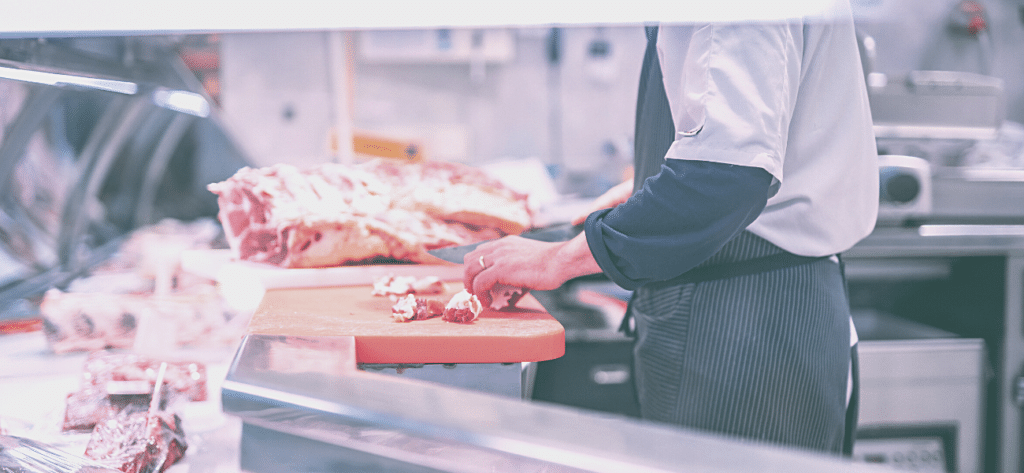
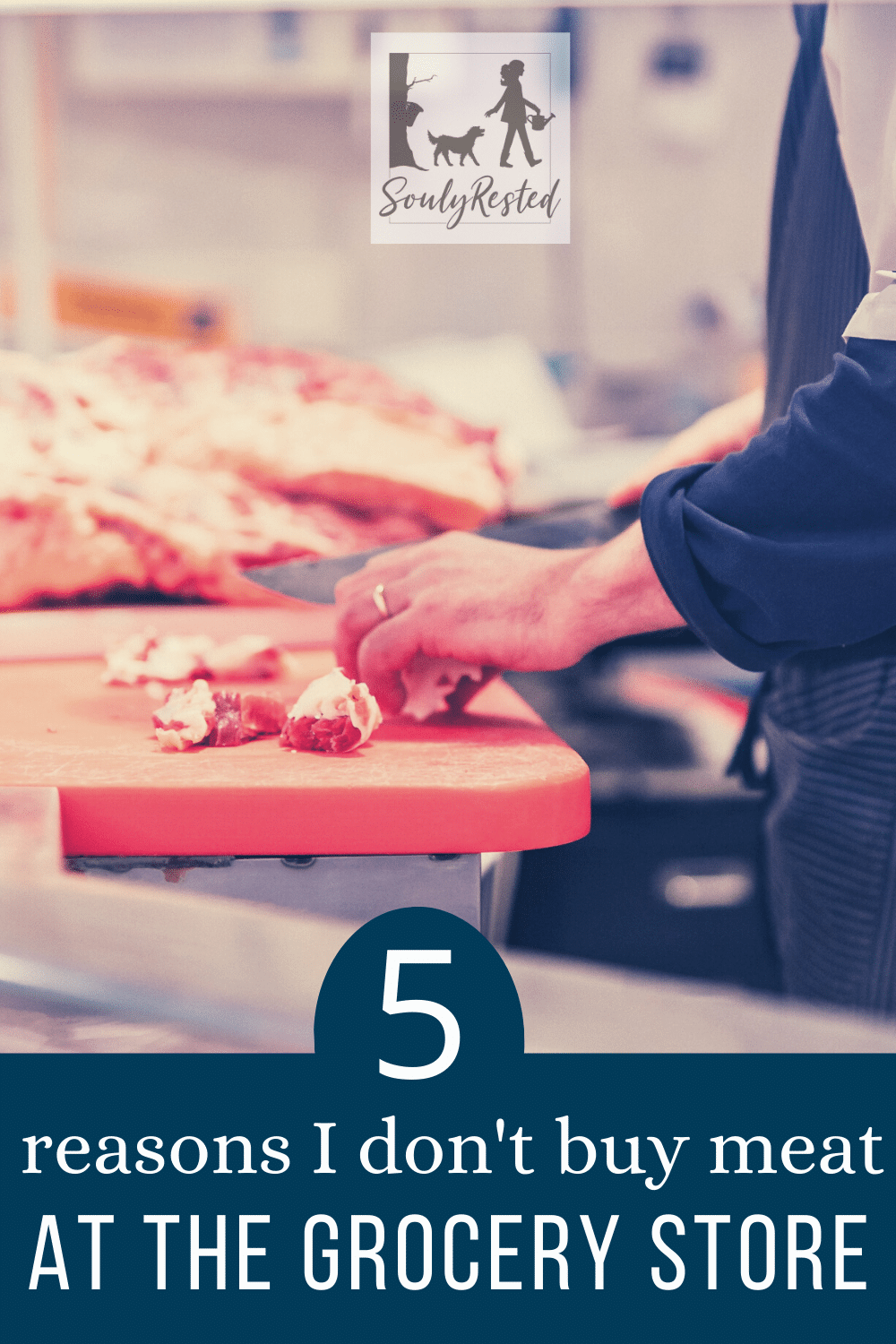
Hi Michelle,
I was reading one of your articles and I had a choice on two links will I thought I could scroll back read the other link later but I can’t find it. You were talking about your pigs and you gave a link for those of us not in your area to find a local meat source.
If you have time would you please send it to me I would like to share it with family members here on the west coast
I’m not sure where I mentioned that… but you could try this option: https://www.localharvest.org/organic-farms/